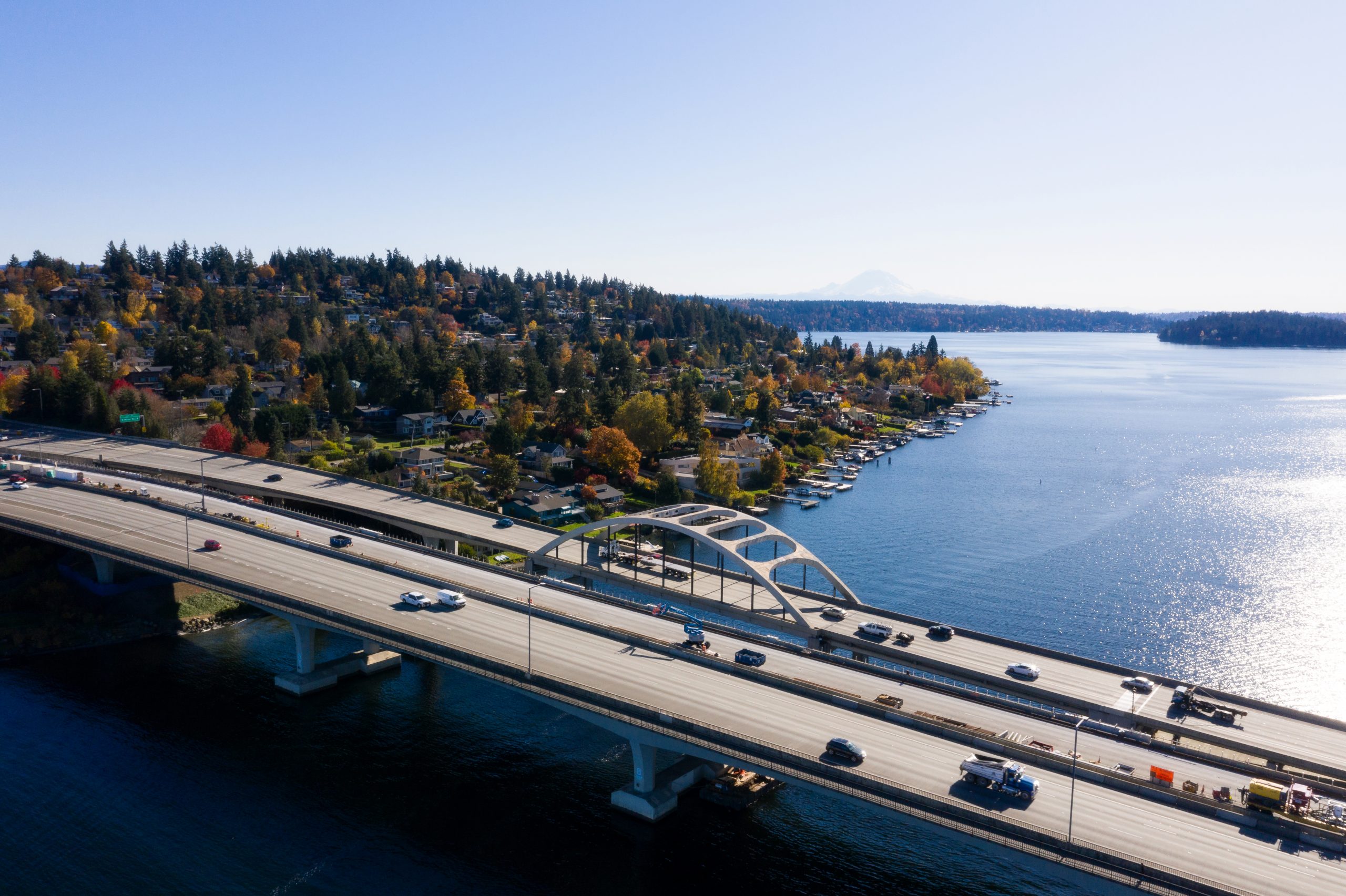September 10, 2020
First Light Rail Track on a Floating Bridge

When faced with the significant design and construction challenge of building an electrified light rail line across Lake Washington, on an existing Interstate Highway floating bridge, the team at Oldcastle Infrastructure in Auburn, WA, showcased their ability to innovate a process to manufacture precast elements that were critical to the project.
THE CHALLENGE
The light rail line had to be constructed while keeping the bridge open to traffic. Sound Transit had a specific need to construct an electrified light rail line across Lake Washington on an existing Interstate Highway floating bridge. Significant challenges included minimizing the weight that would be added to the bridge and addressing the additional loads and stresses applied to the bridge during construction while the highway stayed open to traffic.
Oldcastle Infrastructure was instrumental in manufacturing 9,000 custom precast blocks to serve as rail ties. Careful control over the consistency of the concrete was needed, and that meant that the automation cycle times would limit the number of blocks that could be poured from each batch to 8-10 blocks. This would limit batch sizes to approximately 1/3 yard with batch-to-placement time limited to 30 minutes to achieve the required finish.
THE SOLUTION
Oldcastle Infrastructure developed a new mass production process for the manufacture of a highly specialized lightweight precast rail block. This, “Dual Block” railroad tie system provided the right solution for this unique situation. Kiewit/Hoffman partnered with Oldcastle Infrastructure for the production of the test blocks for full-scale proof of concept tests and production of the final blocks for permanent installation on the bridge.
The uniqueness of this task required development of a new construction method for installation.
A team of consultants and engineers, in collaboration with the University of Washington, developed and lab tested the product concept over several years in advance of the project.
Field testing for proof of concept was conducted using an initial production run of blocks produced by Oldcastle Infrastructure using the materials, methods and procedures that would be utilized for full-scale production.
To address the transition of the rail alignments on and off the bridge, pontoon freeboard elevations and cambers and the safety and maintenance of the rail lines, over 8,800 Dual Blocks of five types and 57 total variations were required.
The lightweight concrete minimized the weight of the installation and all conductive components for each block were grounded back to shore to prevent stray current penetration of the electrified rail system into the bridge.
THE MILE LONG FLOATING TRACK CONNECTS SEATTLE TO BELLEVUE WASHINGTON
BENEFITS
Superior Quality Control
A lightweight concrete mix with a hardened unit weight of 105 lb. PCF was required. The consistency of the lightweight concrete was carefully controlled in a “micro” batching environment.
An ACT WoCoMix WM750 batch plant, with fully automated computer control, provided the consistency required. Each of the final blocks was treated as a unique unit with registration, data acquisition and tracking of every block from the testing of the component materials prior to fabrication through delivery of each block, with all data provided at the time of delivery.
“Rail service from Seattle to Bellevue, Washington is slated to begin in 2023.”
Meeting Tight Tolerances
The tolerances required for block placement, to meet railcar rideability, requires the blocks to be hand positioned, suspended from the rails and leveled before attachment to the bridge
deck. The Dual Block system meets the very tight dimensional tolerance requirements of rail fasteners for fastening of the rails directly to the blocks.
Project: Sound Transit East Link (E130)
Location: Seattle, WA
Distribution Plant: Auburn, WA
Product: Precast Dual Blocks
Start Date: September 2017
Completion Date: Fall 2020